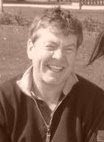From Jaffa, I travelled north to Acre. Crusaders had captured this important port in the early C12th and it rapidly became a crucial base.It fell to Saladin's seemingly invinsible force in 1187 and it was here that Richard began his campaign to reconquer the Kingdom of Jerusalem. After his successful siege, it became the capital of the Crusader kingdom.
Acre had been an important port since the time of Alexander the Great. Moreover, it was here that Vespasian landed with his invasionary force to subdue the Jewish Revolt in AD66. Acre itself still feels like a Medieval, Crusader town with its massive stone walls and narrow alleyways and bewildering souq. In reality, it fell into ruin in the C13th following the end of the Crusades and was then effectively re-established in the 1740's by Ahmed Pasha al-Jazzar, whose name translates as "The Butcher"! Napoleon tried to capture the town in 1799, but "The Butcher", with some English support, managed to defeat him.
I followed Richard's advance down the coast. His plan was to capture the important ports so that supplies were able to support not only an assault on Jerusalem, but a secure kingdom in the years to come. The Lionheart's army hugged the coastline as they moved southwards, partly because it offered cover on their left flank, but also because it meant that he could be adequately supplied and supported by his fleet. The march was constantly harried by Saladin's forces and the inevitable clash finally occurred at Arsuf. There had been a Crusader stronghold here, but it had been sacked in 1187. The ruins might still have offered Richard's force a degree of protection, so Saladin decided to attack before they reached the sanctuary of the fortress. Richard's great victory here enhanced his military reputation in the eyes of both Christian and Islamic scribes.
I decided to leave Richard basking in glory for a couple of days and took a brief detour to Galilee and the Golan Heights. For all its beauty, I found the Sea of Galilee a disappointment. Much of the coastline is in private hands and you have to pay to go anywhere near the water. Once there, you are informed that swimming is forbidden! What? I decided to drive around to the far side and eventually found a quietish spot at a place with the unpromising name of Shittim where a few locals were swimming. I must have been in the water for about 2 minutes befor, predictably, the police arrived. Now, they may have been coming in for a swim themselves, but after my experience in France, I wasn't going to wait to find out. So, rather unceremoniously I scrambled out of the water, over the stones and got into my car and set off without even waiting to dry myself!
The area known as the Golan Heights is a beautiful, desolate wilderness in the north of the country. I travelled up to Banias, near to the Lebanese border. This area is now a popular national park. It's name is a corruption of Pan, the Greek God of the countryside to whom the area is dedicated. He was supposed to reside in a great cave that dominates the hillside above what was the ancient town of Paneum (renamed Caesarea Philippi). Sacrificial victims were thrown into a hole in the floor of his sacred cave and if the nearby springs ran red, then Pan was angry and had rejected the sacrifice, but if no blood was detected in the water then the God was happy. Jesus visited here with his disciples and it was here that he changed Simon’s name to Peter, saying “ thou art Peter and upon this rock I will build my church." Thus, this has been a site of religious significance for well over two thousand years and remains a place of pilgrimage today. Its underlying significance perhaps derives from the fact that the springs bubbling up at Banias are the source of the mighty River Jordan. There is a well signed and well trodden walk that follows the stream from the springs to a beautiful, secluded waterfall.

The Crusaders captured the site in 1129 and developed the site, making use of the existing defences of Caesarea Philippi to protect their town. This settlement was itself further protected by the magnificent and imposing Crusader castle known as Nimrod, perched on the surrounding clifftops. The town and fortress both fell in 1164 and were never recaptured by Crusading forces.

I have visited such an amazing number of fantastic sites in the last few days, including Crusader strongholds at Akhziv (Casal Imbert), Letrun, Ramla and Ashquelon, as well as Caesarea, Capernaum and Jotapata. My journey has taken me from Ashquelon in the south, up through Galilee and the Golan Heights to the Lebanese border. It is impossible to write about them all here. My odyssey is nearly complete and my final chapter is a trip to Jerusalem, to accomplish what Richard failed to achieve.







